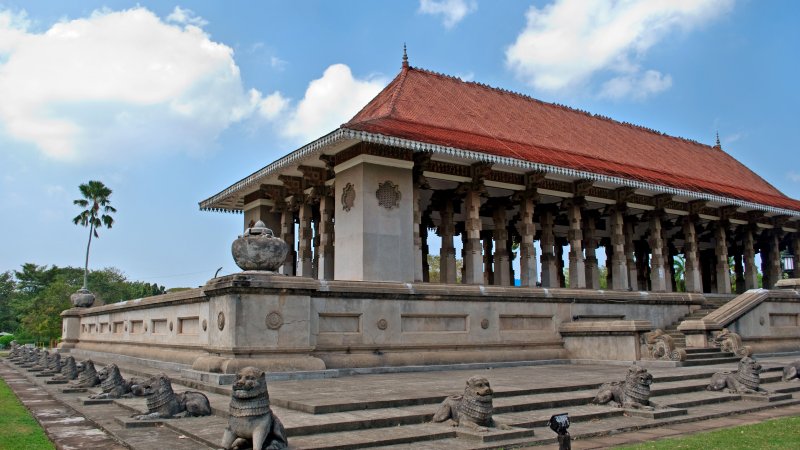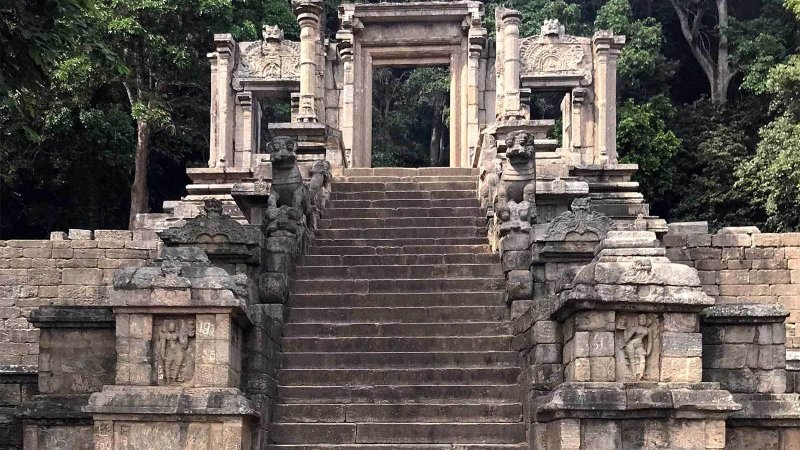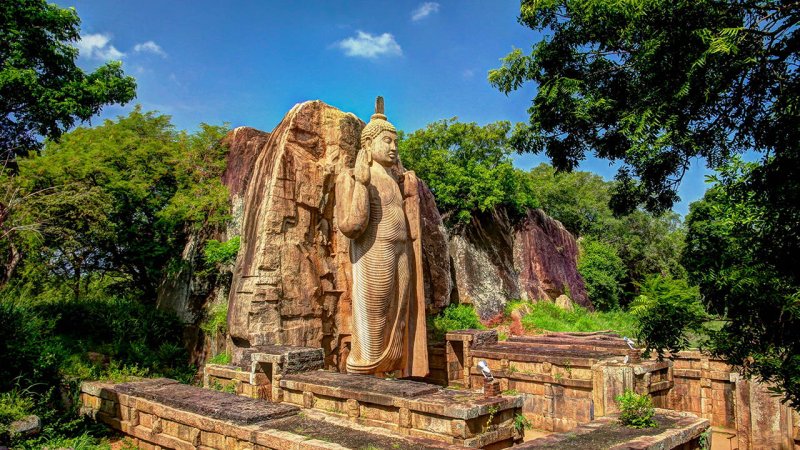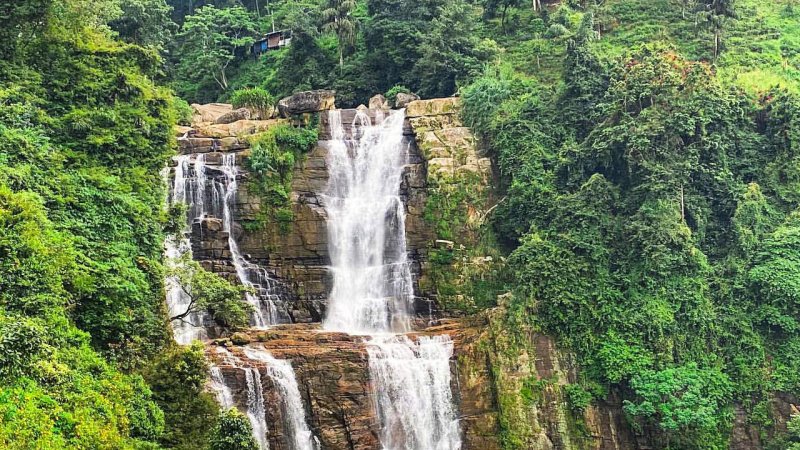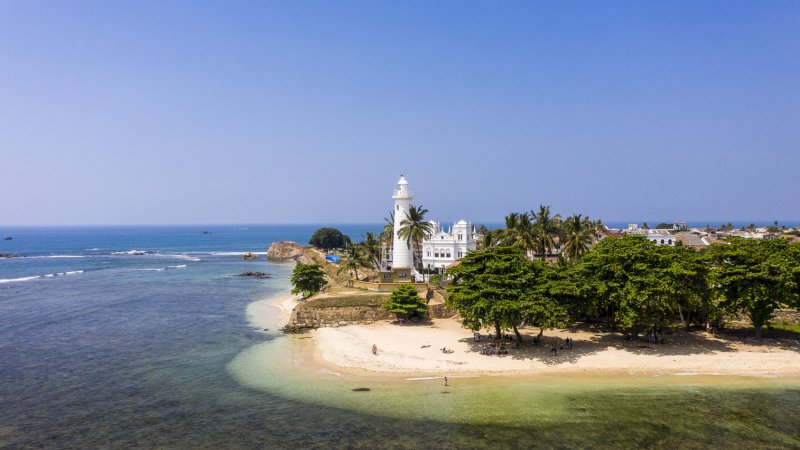LET'S SEE PARADISE- Starting Price from 545 USD
8 days & 7 nights
01.11.2025- 30.04.2026
Itinerary
DAY-1- ARRIVAL AT BANDARANAYAKE AIRPORT-TRANSFER TO COLOMBO
- ARRIVAL AT BANDARANAYAKE INTERNATIONAL AIRPORT
- MEET & GREET BY LET’S SEE ASIA REPRESENTATIVE AT THE ARRIVAL LOBBY
- TRANSFERRED TO COLOMBO. CHECK IN TO COLOMBO HOTEL
- IN THE AFTERNOON COLOMBO CITY TOUR & SHOPPING
- DINNER & OVERNIGHT STAY AT COLOMBO HOTEL
DAY -2-TRANSFER TO ANURADHAPURA
- BREAKFAST AT HOTEL
- TRANSFERD TO ANURADHAPURA.
- EN ROUTE VISIT YAPAHUWA
- DO THE CITY TOUR IN ANURADHAPURA- ANCIENT RUINS & SACRED CITY
- CHECK IN TO ANURADHAPURA HOTEL
- DINNER & OVERNIGHT STAY AT ANURADHAPURA HOTEL
DAY-3 - VISIT AWUKANA , & DAMBULLA CAVE TEMPLE
- BREAKFAST AT HOTEL
- PROCEED TO SIGIRIYA.
- EN ROUTE VIST AWUKANA STATUE
- STOP AT DAMBULLA ROCK TEMPLE- EXPLORE IT
- CHECK IN TO HABARANA / DAMBULLA/ SIGIRIYA HOTEL
- DINNER & OVERNIGHT STAY AT HOTEL
DAY-4- VISIT SIGIRIYA ROCK FORTRESS AND THE ANCIENT CITY OF POLONNARUWA
- BREAKFAST AT HOTEL
- PROCEED TO VISIT SIGIRIYA ROCK FORTRESS
- AFTER THAT TRANSFER TO POLONNARUWA -
- DO THE POLONNARUWA CITY TOUR WITHIN ANCIENT RUINS.
- TRANSFER TO HABARANA.
- CHECK IN TO HABARANA / SIGIRIYA / DAMBULLA HOTEL.
- DINNER & OVERNIGHT STAY AT HABARANA.
DAY-5- TRANSFER TO KANDY VIA MATALE VISIT SPICE GARDENS, ALUVIHARE CAVE TEMPLE
- BREAKFAST AT HOTEL
- PROCEED TO KANDY VIA MATALE. EN ROUTE VISIT SPICE GARDEN /ALUVIHARA CAVE TEMPLE
- ARRIVAL KANDY AND DO CITY TOUR – BATIK FACTORY/TEA FACTORY/GEM FACTORY
- (ON YOUR REQUEST).
- CHECK IN TO KANDY HOTEL .
- EVENING VIST TO TEMPLE OF THE SACRED TOOTH RELIC & WITNESS A TRADITIONAL SRI LANKAN CULTURE SHOW.
- DINNER & OVERNIGHT STAY AT KANDY HOTEL
DAY-6 -VISIT ROYAL BOTANICAL GARDEN & TRANSFER TO RAMBODA ( NUWARA ELIYA)
- BREAKFAST AT HOTEL
- PROCEED TO PERADENIYA BOTANICAL GARDEN AND EXPLORE IT
- TRANSFERED TO NUWARA ELIYA. EN ROUTE YOU CAN SEE BEAUTIFUL WATER FALLS AND CAN VISIT TEA CENTERS & ENJOY TASTE OF PURE CEYLON TEA.
- CHECK IN TO RAMBODA HOTEL .
- DINNER & OVERNIGHT STAY AT RAMBODA HOTEL
DAY-7-SIGHTSEEING TOUR NUWARA ELIYA AND TRANSFER TO YALA
- BREAKFAST AT HOTEL
- DO SIGHTSEENING TOUR AT NUWARA ELIYA
- AFTER CITY TOUR TRANSFER TO YALA VIA ELLA ,EN ROUTE VISIT TEA PLANTAION & FACTORY
- CHECK IN TO TISSAMAHARAMA /YALA HOTEL .
- DRIVE TO THE YALA NATIONAL PARK BY SFARI JEEPS.
- DINNER & OVERNIGHT STAY AT YALA HOTEL.
DAY-8-TRANSFER BACK TO AIRPORT VIA GALLE
- BREAKFAST AT HOTEL
- PROCEED TO COLOMBO VIA GALLE.
- ARRIVAL TO GALLE AND DO GALLE CITY TOUR. VIST ANCIENT GALLE FORT
- FROM GALLE PROCEED TO COLOMBO ,EN ROUTE VIST KOSGODA TURTEL HACHERY.
- TRANSFERRED TO COLOMBO AIRPORT
- THIS PROGRAM CAN BE SLIGHTLY CHANGED, AS PER THE YOUR ARRIVAL & DEPARTURE TIME.
 3
3
HERITAGE HOTEL -ANURADHAPURA
 3
3
OAK -RAY TEA BUSH -3*** RAMBODA
 3
3
KANDY HILLS -3***
 3
3
THE NATURE PARK VILLA -3*
 3
3
CINNAMON RED COLOMBO-3***
 3
3
HOTEL TAMARIND TREE -TISSA -3****
Overview
COLOMBO CITY TOUR
Colombo is the commercial capital and largest city of Sri Lanka. According to the Brookings Institution, Colombo has a population of 5.6 million in the metropolitan area, and 752,993 in the City proper. It is the financial center of the island and a popular tourist destination. Colombo was known to ancient traders 2,000 years ago. Famous landmarks in Colombo include Galle Face Green, Viharamahadevi Park, Beira Lake, Colombo Racecourse, Planetarium, University of Colombo, Mount Lavinia beach, Nelum Pokuna Theatre, Colombo Lotus Tower(is being constructed) as well as the National Museum.
YAPAHUWA
Yapahuwa was one of the ephemeral capitals of medieval Sri Lanka. In 1272, King Bhuvenakabahu transferred the capital from Polonnaruwa to Yapahuwa in the face of Dravidian invasions from South India, bringing the Sacred Tooth Relic with him. Following the death of King Bhuvenakabahu in 1284, the Pandyans of South India invaded Sri Lanka once again and succeeded in capturing the Sacred Tooth Relic. Following its capture, Yapahuwa was largely abandoned and inhabited by Buddhist monks and religious ascetics
ANURADHAPURA
Anuradhapura is one of the ancient capitals of Sri Lanka, which is famous for its well-preserved ruins of ancient Sri Lankan civilization. The city, now a UNESCO World Heritage Site, was the center of Theravada Buddhism for many centuries. It is one of the oldest continuously inhabited cities in the world and one of the eight World Heritage Sites of Sri Lanka. The ancient city, considered sacred to the Buddhist world, is today surrounded by monasteries covering an area of over sixteen square miles (40 km²).
THE AUKANA BUDDHA STATUE
The Avukana statue is a standing statue of the Buddha near Kekirawa in North Central Sri Lanka. The statue, which has a height of more than 40 feet (12 m), was carved out of a large granite rock face during the 5th century. It depicts a variation of the Abhaya mudra, and the closely worn robe is elaborately carved. Constructed during the reign of Dhatusena. The statue alone is 38 feet 10 inches (11.84 m) in height, and with the pedestal, the total height of the Avukana statue reaches 42 feet (13m).
DAMBULLA ROCK TEMPLE
Dambulla cave temple, also known as the Golden Temple of Dambulla, is a World Heritage Site (1991) in Sri Lanka. The rock towers are spread over 160 m above the surrounding plains. There are more than 80 documented caves in the surrounding area. Major attractions are spread over five caves.
SIGIRIYA ROCK FORTRESS
Sigiriya is an ancient palace located in the central Matale District near the town of Dambulla in the Central Province, Sri Lanka. According to the ancient Sri Lankan chronicle, the Culavamsa, this site was selected by King Kasyapa (477 – 495 CE) for his new capital. He built his palace on top of this rock and decorated its sides with colorful frescoes. On a small plateau about halfway up the side of this rock, he built a gateway in the form of an enormous lion. Today, Sigiriya is a UNESCO-listed World Heritage Site. It is the most visited historic site in Sri Lanka.
POLONNARUWA ANCIENT CITY
Poḷonnaruwa is the main town of Polonnaruwa District in North Central Province, Sri Lanka. Kaduruwela area is the Polonnaruwa New Town, and the other part of Polonnaruwa remains as the royal ancient city of the Kingdom of Polonnaruwa. The Ancient City of Polonnaruwa has been declared a World Heritage Site.
ALUVIHARAYA CAVE TEMPLE
The Aluvihare Rock Temple (also called Matale Alu Viharaya) is a sacred Buddhist temple located in the Matale District of Sri Lanka. The history of Aluvihare Rock Temple is traced back to the 3rd Century B.C to the reign of King Devanampiyatissa. Aluvihare Rock Temple was the historic location where the Pali Canon was first written down completely in text on Ola (palm) leaves. Many monastery caves, some of which exhibit frescoes, are situated near this temple.
SRI DALADA MALIGAVA
Sri Dalada Maligawa, or the Temple of the Sacred Tooth Relic, is a Buddhist temple in the city of Kandy, Sri Lanka. Kandy is a World Heritage Site mainly due to the temple. Rituals are performed three times daily. On Wednesdays, there is a symbolic bathing of the relic with an herbal preparation made from scented water and fragrant flowers called Nanumura Mangallaya. This holy water is believed to contain healing powers and is distributed among those present.
ROYAL BOTANICAL GARDEN
Royal Botanical Garden, Peradeniya, attracts 2 million visitors annually. It is renowned for its collection of orchids. The garden includes more than 4000 species of plants, including orchids, spices, medicinal plants, and palm trees. Attached to it is the National Herbarium of Sri Lanka. The total area of the botanical garden is 147 acres (0.59 km2), at 460 meters above sea level, and with a 200-day annual rainfall.
NUWARA ELIYA CITY TOUR
Nuwara Eliya is a city in the hill country of the Central Province, Sri Lanka. The city name is derived from the meaning "city on the plain (table land)" or "city of light". The city is the administrative capital of Nuwara Eliya District, with a picturesque landscape and temperate climate. It is located at an altitude of 1,868 m (6,128 ft) and is considered to be the most important location for tea production in Sri Lanka. The city is overlooked by Pidurutalagala, the tallest mountain in Sri Lanka. Nuwara Eliya is also known for its temperate, cool climate; the city is known as the coolest area in Sri Lanka.
YALA NATIONAL PARK
Yala National Park is the most visited and second-largest national park in Sri Lanka. The park covers 979 square kilometres (378 sq mi) and is located about 300 kilometres (190 mi) from Colombo. The park is best known for its variety of wild animals. It is important for the conservation of Sri Lankan elephants, Sri Lankan leopards, and aquatic birds. Yala hosts a variety of ecosystems ranging from moist monsoon forests to freshwater and marine wetlands. Yala National Park is one of the 70 Important Bird Areas (IBAs) in Sri Lanka. Yala harbours 215 bird species, including six endemic species of Sri Lanka.
GALLE DUTCH FORT
Galle Fort, in the Bay of Galle on the southwest coast of Sri Lanka, was built first in 1588 by the Portuguese, and then extensively fortified by the Dutch during the 17th century from 1649 onwards. The fort has a colourful history. The heritage value of the fort has been recognized by UNESCO, and the site has been inscribed as a cultural heritage UNESCO World Heritage Site for its unique exposition of "an urban ensemble which illustrates the interaction of European architecture and South Asian traditions from the 16th to the 19th centuries.
Inclusions for the rate
- Accommodation in standard rooms on a half-board basis at hotels specified or of similar standard.
- Transportation by air-conditioned vehicle from pick up at the airport to drop off in Colombo
- All transfers are on a Private basis in a comfortable, dual A/C minivan.
- Service of a professional English-speaking driver.
- Hotels, as mentioned above, with daily breakfast and dinner.
- Toll/Parking fees.
- Government TAX/VAT (Kindly note that this is subject to change in the event the government changes its tax policy.
- Minimum 4 Pax need to apply the above rate.
Value added services
- Bottled water during the tour.
- 1 SIM card ( 15GB)
- Gift Souvenirs.
Exclusions for the rate
- Visa fees –
- Entrance Fees for sites mentioned in the itinerary.
- Licenced National Guide.
- Kandy Perahara Supplements.
- New Year and Christmas night Supplements
- Peak Period Supplements ( 20.12.2025- 10.01.2026)
- Cost of beverage throughout the tour.
- Expenses of a personal nature.
- Tips and Porterage
- Any other services not specified above
- Optional excursions and additional services could be provided for which we will charge additionally.
- Visits to wildlife parks will be at the client's own risk.
Hotel rules & Regulations
- The official check-in time at all hotels will be 1400hrs.
- The official check-out time at all hotels will be 1200hrs.

